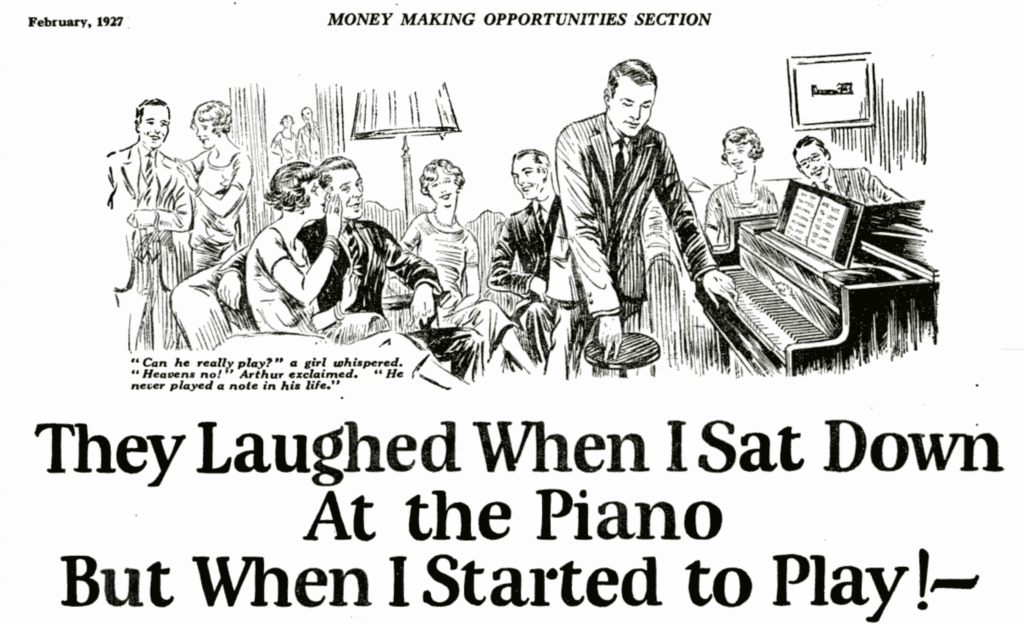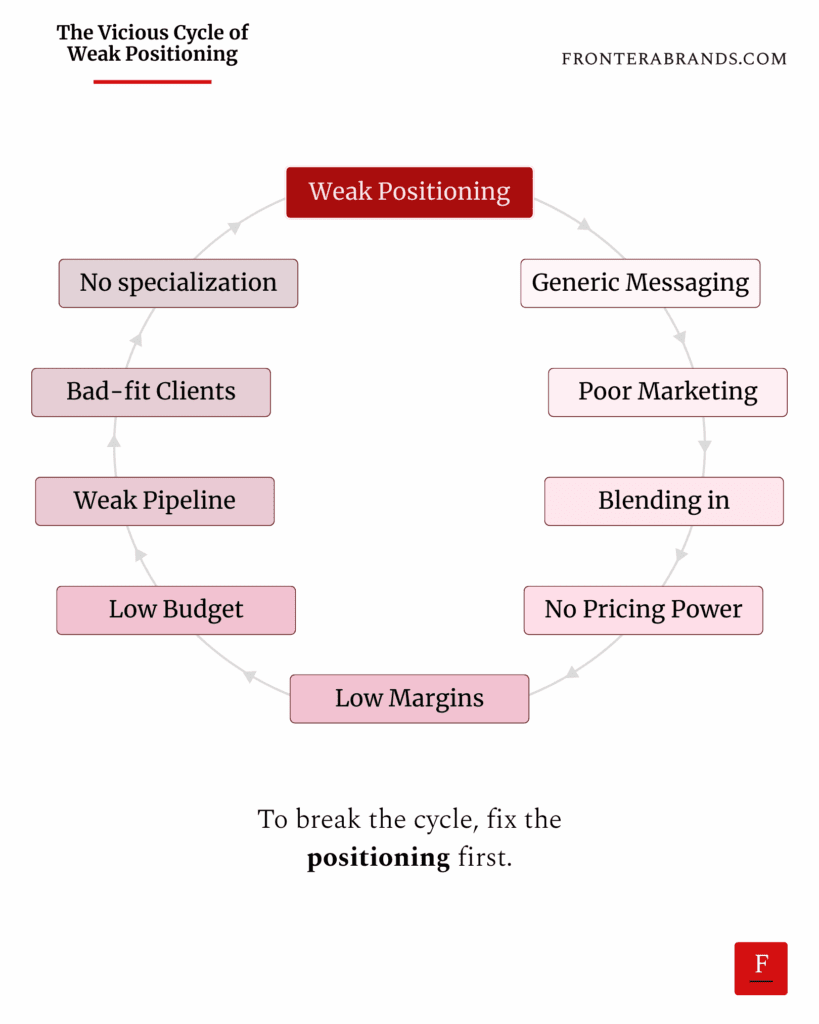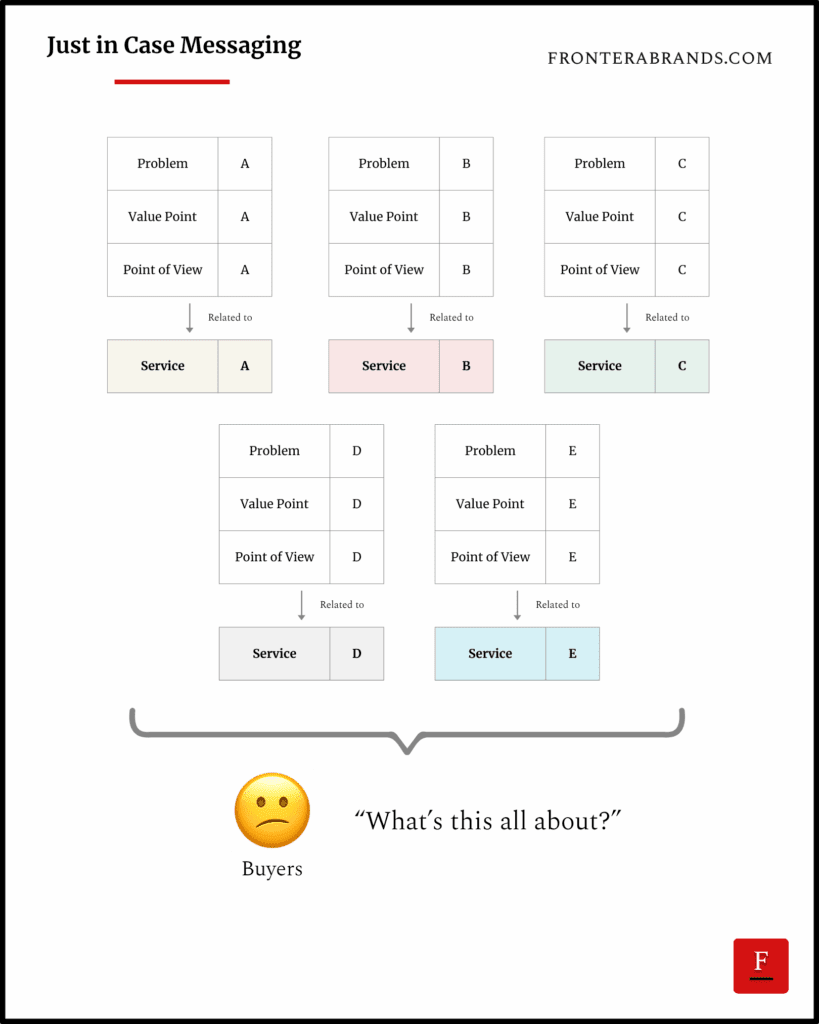♦️ Why a winning brand positioning demands weaknesses (and how to embrace them)
|
In 1970, Listerine’s marketing department was feeling the heat. P&G had launched a new mouthwash brand as a competitor a few years before. They called it Scope. And they attacked Listerine’s obvious weakness — taste. Listerine burned like medicine. Consumers knew it. So Scope entered the market using taste as its differentiator. They claimed a mouthwash didn’t have to taste bad. And they were quickly gaining market share with aggressive ad campaigns.
Listerine’s marketing team discussed how to respond to this threat. Should they make their formula taste milder? Or maybe they should release a new “light” version to compete with Scope? But while doing research, they realized something strange. Focus groups who tested a mild version of Listerine all said the taste was better. But they “couldn’t feel it working.” So the alternative formula scored higher in taste. But lower in effectiveness. This opened the eyes of the Listerine marketing team. Sure, their taste was a weakness. But that weakness increased the believability of their strength — killing bacteria that caused bad breath. So Listerine’s marketing team didn’t try to cover that weakness to respond to Scope. They decided to embrace it. They released a new campaign and said: “The taste people hate, twice a day.” People loved the honesty. And they kept Listerine as the serious germ-killer in their minds. Thanks to that campaign, Listerine stayed the market leader. Despite P&G’s deep advertising pockets behind Scope.
We’ve talked about value tradeoffs before. When you embrace your negative, your claim about the positive becomes more convincing. And here’s the thing. Good positioning always brings obvious weaknesses. Because positioning is not about being perfect. That’s impossible. Positioning is about building preference. Being the right option for a certain type of client, who’d like to solve a certain problem, in a certain way. That means choosing competitive factors where you’ll be strong and different. And leaving others where you’ll be intentionally weak. Just like Listerine. But most B2B brands do the opposite. They pretend they don’t have any weaknesses. They claim to be the best at everything with all-in-one and end-to-end solutions. Even though they don’t have the same quality at every service. They claim to serve a wide range of client types equally well. Even when their value fits specific businesses. Guess what happens when they message being the best at everything, for everyone? They lose their believability. Because when everything seems too perfect, buyers get suspicious. Nobody believes a lawyer who says he can handle property, tax, and trademark cases for both individuals and multinational companies. But you’d believe the one who says he only handles trademark disputes for multinational companies and nothing else. Because faking perfection creates suspicion. Buyers would like to know the downsides of a purchase, together with the benefits. Listerine kills bacteria. Downside? It tastes like medicine. Fair enough. It’s not perfect, but it’s the right one for the job. It’s a different option with clear tradeoffs. So use these questions to test your positioning and find opportunities to strengthen your differentiation:
Don’t try to make your brand perfect at everything. Choose what makes you different. And own the weaknesses that prove it. Build preference, not perfection.
|
Frontera
Join 10,000+ B2B founders getting the strategies of iconic brands.
In 1925, a rookie copywriter named John Caples had to sell something hard to sell: A mail-order piano course. He was barely a year into his job at the agency Ruthrauff & Ryan. The U.S. School of Music had knocked on their door. They wanted a campaign for their new self-study instrument courses. Caples needed an angle for his copy. Should he focus on how easy it makes learning? Should he focus on the lower price compared to hiring a tutor? Both were true. But none of it felt compelling. Caples...
Weak positioning causes a vicious cycle for every firm. It goes like this: You lack clarity around your ideal client profile, the specific problem you solve for them, and how you solve it differently. That causes you to have generic messaging. That causes your website, content, and ads to get ignored. That causes buyers to see you as interchangeable with hundreds of other firms. That causes you to lack pricing power. That causes you to have low margins. That causes you to have a low budget...
Boutique consulting firms make most of their revenue from a single service. But that core service gets only a tiny share of their messaging. You know why? Because they fear losing out. “What if somebody is looking for our other offers?” “What if we miss an opportunity?” So they list 10 services on their websites. Their content talks about 10 different value points related to different services. They hedge. But this ‘just in case’ messaging kills sales. Warren Buffett has a quote I like:...





